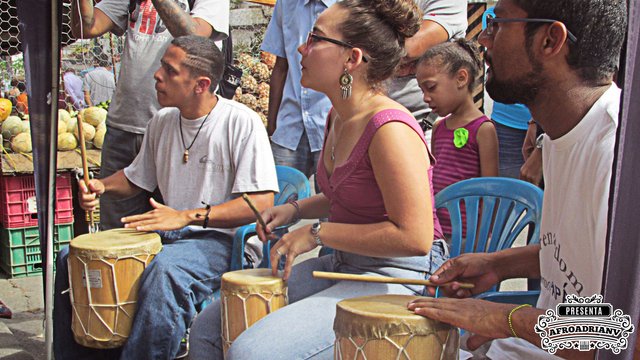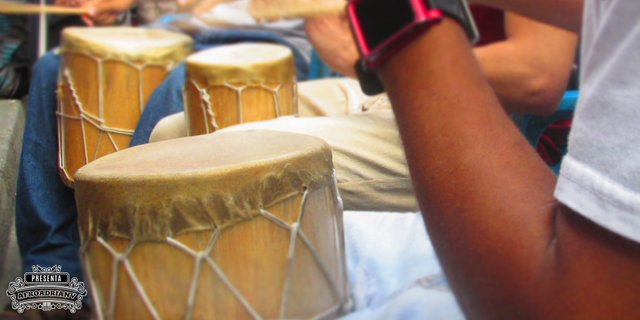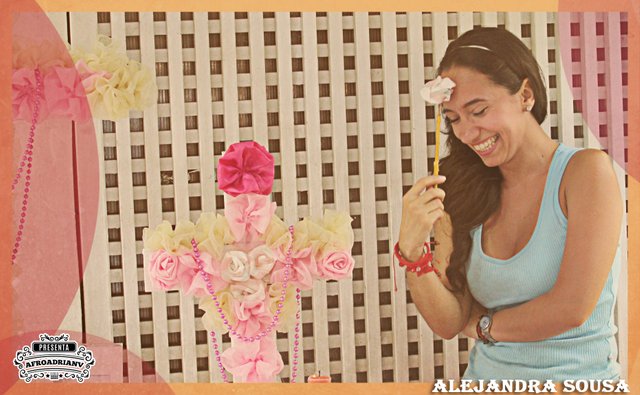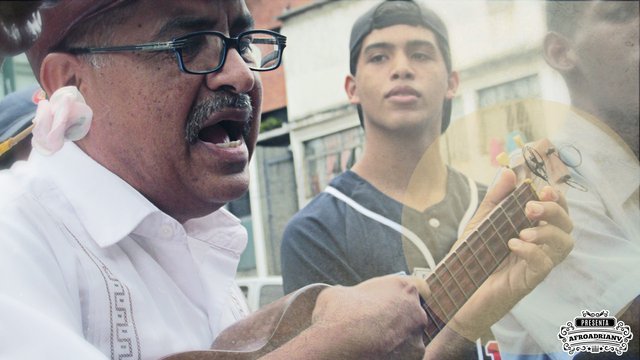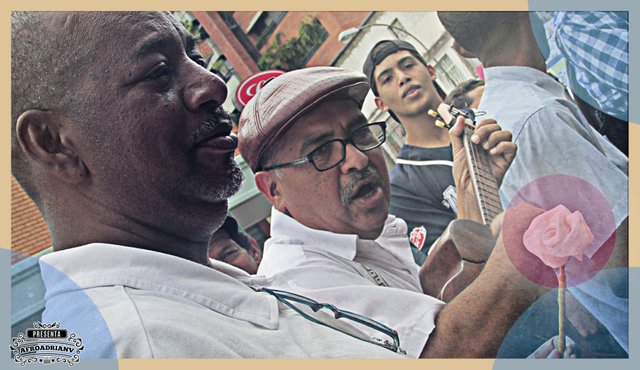Magic&Tradition: Cruz de Mayo, tenths & fulías. DRUMMING AND SINGING!
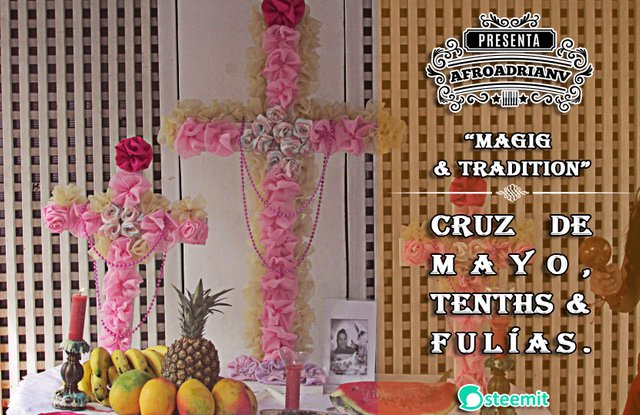
HAPPY DAY, MYDEARSTEEMIANS! Have a progress full week and good vibes for you all, my dear readers.
Do you want to know what all this is about? Well, join me in my photographic series full of emotions and experiences that will make us know a little more about Venezuelan holidays.
And if you want to know a little more about this tradition you can enter my previous publication clicking HERE
Historical review:
Every year, the wood is worn with flower, and it’s offered fruits, drinks, candles, among other thing ... It is a not danced party, but believe me that this lasts until the dawn and the best of all is that the you can participate by singing, playing, slapping or even drinking “ liquid poetry” Hehehe.
Percussion:
The percussion is structured by three tamboritas, as they call them in the town of Miranda State. (In some towns they play with four or replace one of the drums with another type of drum) The sharpest of the tamboritas, located in the middle is called "Prima" to the left is located the Cruzao' which is of an intermediate pich and the " Pujao' " with a completely serious timbre and the one that is adorning peals during all the accompaniment of the Fulía that they are playing.
This is accompanied by others such as “El plato de Peltre” (the pewter plate) Charrasca, Maracas, among others.
Singing and tenths:
Before beginning with the velorio or velada, a respective ceremony is performed with prayers and rosaries to then input the tenth, which is the respective greeting that is given to the cross before beginning the party. The singers have formulas to announce their desire to initiate their interventions that is recited in the form of poetry, can be a decimist or more, written or improvised. After the tenth is finished cry of "TAMBOR & CANTO" is let out.
If you want to know how to build aspine tenth, I’ll leave the following link HERE:
The chanting is composed of quatrains verses, while the chorus answers sometimes with what the soloist says, sometimes not; the song as the tenth always goes in constant adoration towards the Cross, or simply the singers / improvisers can cover other topics such as singing to love, to politics, to paganism, etc. Some songs have African origin with words that are still unknown.
Example of Fulía:
Ueee. El día en que tu naciste,
Canta, pajarillo alegre
Nacieron tres cosas bellas
"CHOIR"
Canta, pajarillo Alegre
Olo lelo, lelo Layla
Canta, pajarillo alegre
"Solo"
Nacio el Sol, Nació la Luna
Canta Pajarillo alegre
Y nacieron las estrellas
** “El testigo” ** (the witness) They call that beautiful flower that we see in the photos that I have come to show. That is the singer's permission; when it is its turn to sing, the person must obtain the flower, with the permission of others singers or the owner of the party.
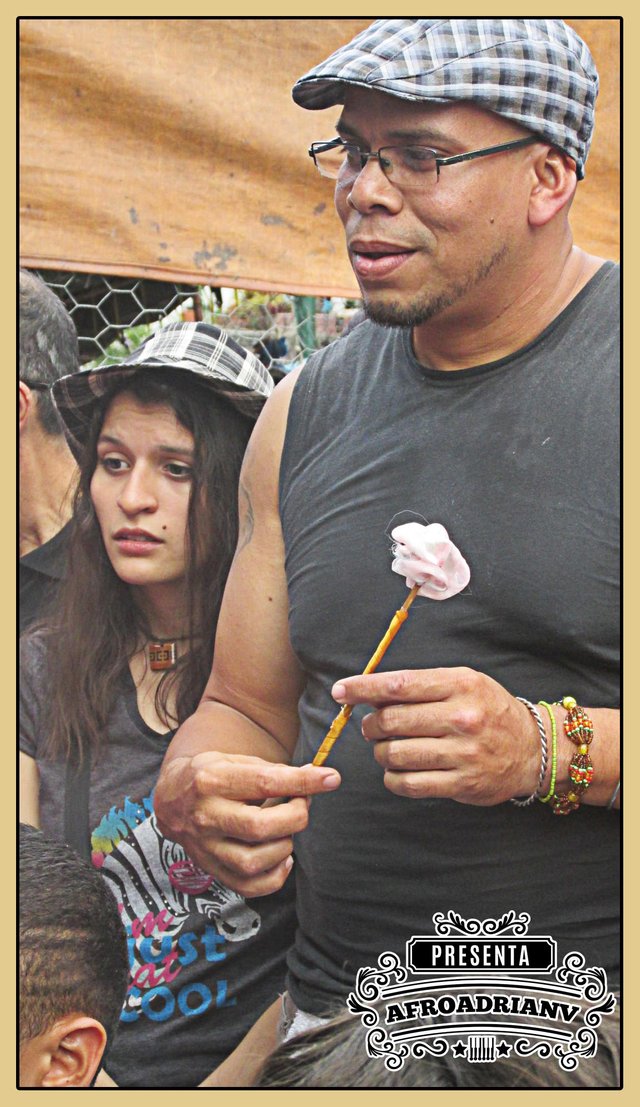
PD: THIS IS ME, PLAYING ONE OF THE TAMBORITAS (El Pujao')
Photo by: @naiyagarcia24
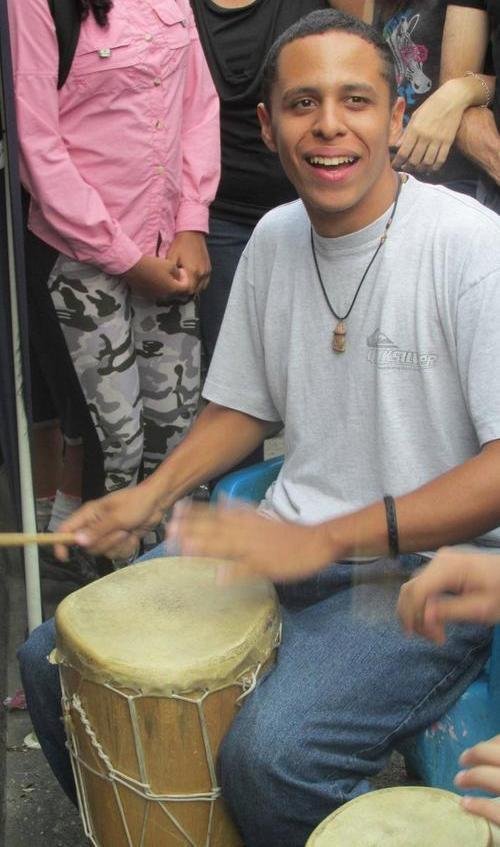
###HERE I ATTACH A COUPLEOF VIDEOS THAT I RECORDED FOR THE COMMUNITY AND ANYONE WHO WOULD LIKE TO WATCH THEM.
I want to thank all the beautiful community of @curie, @cervantes, @celfmagazine, @elarca @provenezuela, @votovzla and especially to the readers who fill us with excellent comments and who give us a lot with their knowledge and support for culture and art within this beautiful platform that we have to promote with all of us and our effort...

These photos were taken exactly in "Pedregal" Chacao Municipality. At the velada of Cruz de Mayo organized by Jonas Elena Yanes and her group Al Son del Viento and the entire neighboring community of Pedregal
Photos taken with my Canon camera: Sx160. By my person @afroadrianv and @naiyagarcia24
Sources extracted, from the book "Fiestas Tradicionales" by Fundación Bigott & our experience in Venezuelan popular culture.


